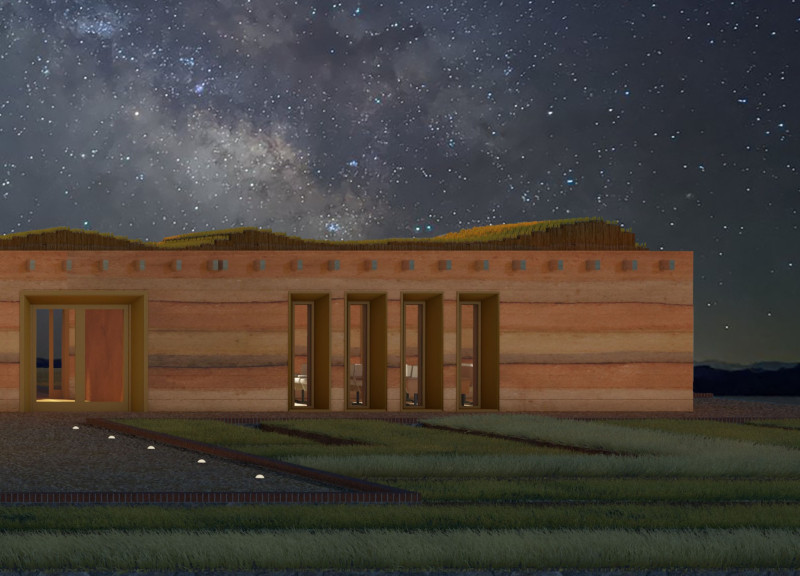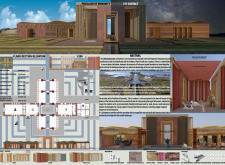5 key facts about this project
The Pavilion of Humanity is located in Guaqui, by the shores of Lake Titicaca. It functions as a space for cultural exchange and learning, reflecting the heritage of the Tiahuanacota civilization, known for its impressive engineering and architecture. The design emphasizes harmony with the natural environment and aims to engage the community with the history of the region.
Conceptual Framework
Rooted in the significance of the Tiahuanacota civilization, the pavilion creates a connection between past and present. It acknowledges the civilization’s characteristic megalithic structures and integrates those themes into its design. By being close to important archaeological sites, the pavilion serves as a cultural landmark that encourages visitors to explore local history and its relevance today.
Material Selection
The Pavilion of Humanity uses materials sourced from the surrounding area, including sand, stones, reeds, and wood. These choices reflect the building methods of the Tiahuanacota, particularly their technique of wet sand molding, which is known for producing accurate and functional architectural components. This approach not only enhances the visual appeal of the pavilion but also ties it closely to local heritage and environmental sustainability.
Spatial Organization
The layout of the pavilion is designed to promote movement and interaction. It includes several areas such as workshops, galleries, a coffee shop, and restrooms, all arranged to encourage social gatherings and learning activities. Ample natural light fills the spaces, creating an open and welcoming atmosphere that invites exploration and participation from visitors.
Architectural Detail
Notable elements of the design include the presence of megaliths and mud walls, which remain integrated into the site, blending with the landscape. This connection between the built environment and its historical roots reflects an intention to create continuity between past and present. The pavilion’s design resonates with the beauty of its natural surroundings, fostering a quiet space for reflection on the cultural legacy it represents.


















































